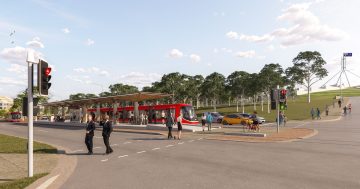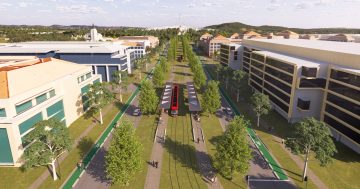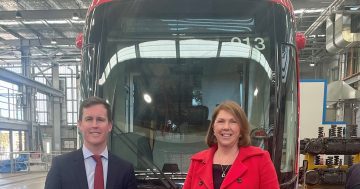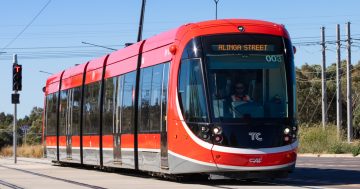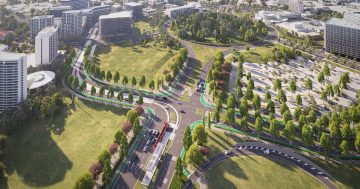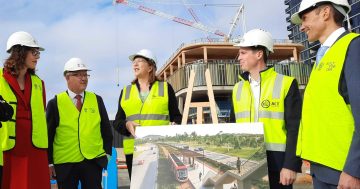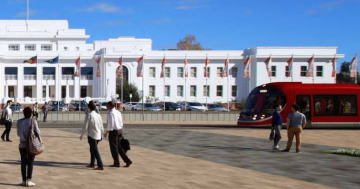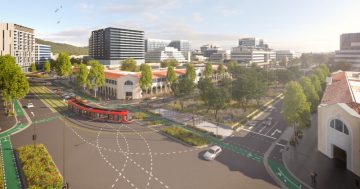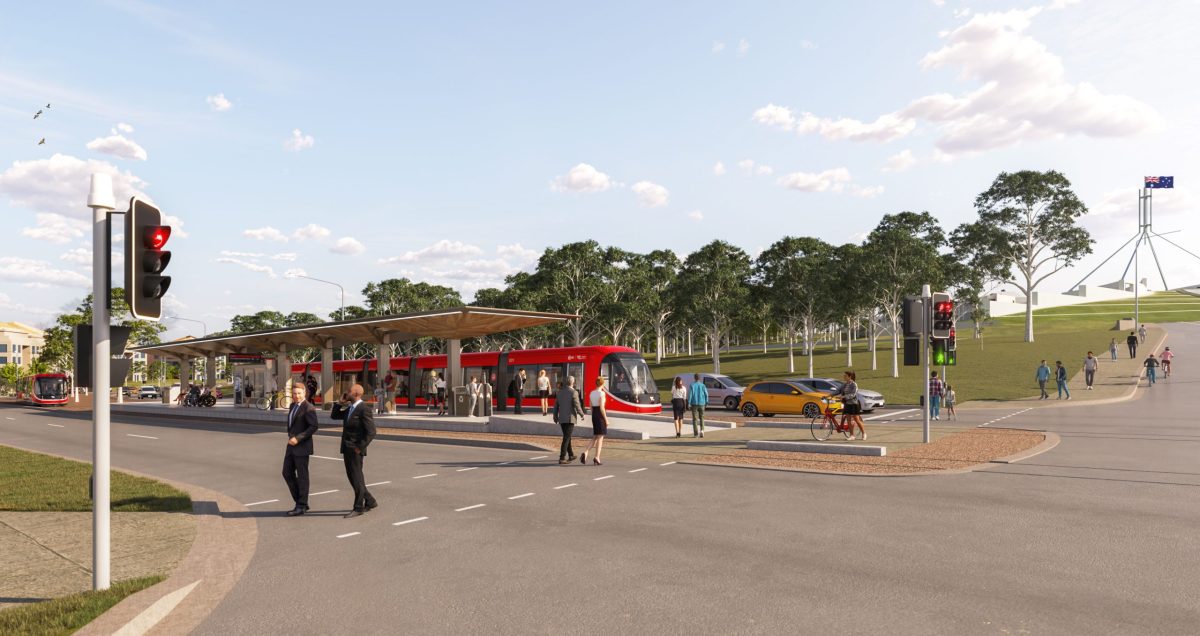
A light rail stop at Kings Avenue: the project faces significant heritage and environmental constraints. Images: ACT Government.
Endangered or vulnerable cockatoos, parrots, the golden sun moth, a grasshopper and lizard and their habitats are in the path of the proposed light rail extension to Woden, which the ACT Government is expecting to start building in 2028.
The project referral to the Federal Environment Department under the Environment Protection and Biodiversity Conservation Act (EPBC) also says there will be a significant impact on heritage values in the Parliamentary Zone.
This includes the loss of trees planted in the 1920s, particularly those in the median along Commonwealth Avenue.
The EPBC referral is an important step in the progress of the proposed Stage 2B from Commonwealth Park to Woden and precedes an environmental impact study (EIS) that will be prepared and released later this year for consultation.
But it also highlights the constraints the project faces.
Chief Minister Andrew Barr finally confirmed a timeline for the project, saying the government was working towards a construction period of 2028-2033.
He said light rail to Woden would be the most complicated infrastructure project the Territory Government had undertaken and required several unique steps to deliver the project.
“It will be the largest change to the landscape of the National Triangle since the construction of the New Parliament House, and a project that spans several districts of Canberra,” he said.
Opposition transport spokesperson Mark Parton seized on the announcement, saying it vindicated the Canberra Liberals’ estimates on the cost and delivery of the project.
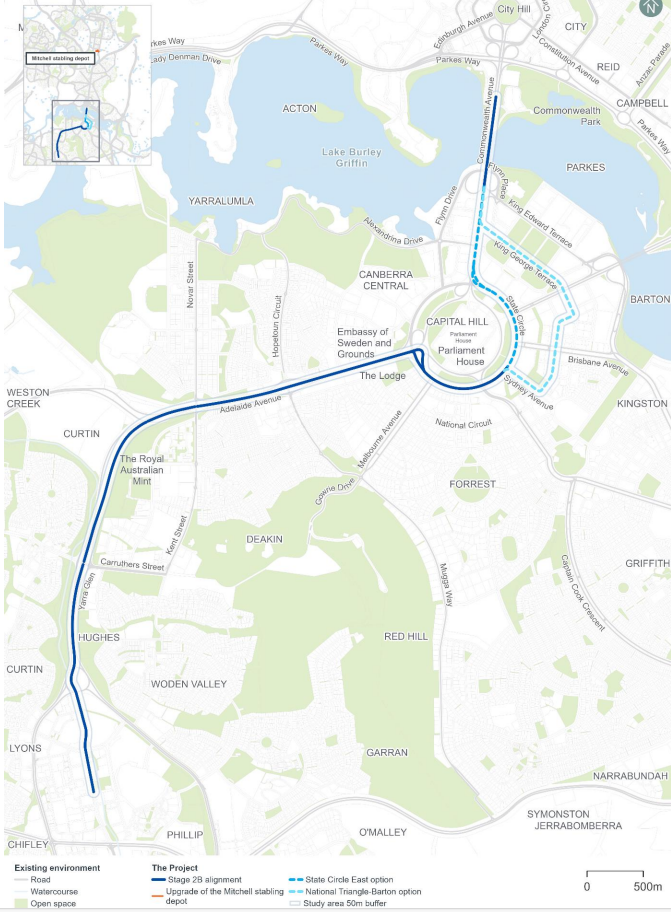
“Today’s announcement confirms that we’ve all been taken for a ride by Andrew Barr … an exhaustively long, obscenely expensive ride,” he said. “The Canberra Liberals stand by our cost estimate of $4 billion for the entirety of Stage 2, but all indications are that this may well be a conservative approximation.”
Mr Parton suggested that Transport Minister Chris Steel may have misled the Assembly on the timeline and said that in 2019, Mr Barr had said light rail would reach Woden by 2025.
“Does anyone in this city actually believe the latest rubbery timeline?” he said.
The referral outlines the project scope and the two alignments now being proposed – the preferred, direct route along State Circle East to Adelaide Avenue and the National Triangle-Barton route, which would follow King George Terrace, Macquarie Street, Bligh Street, National Circuit and Sydney Avenue, before connecting with State Circle.
The project involves about 10 km of track, new stops and a dedicated crossing over Lake Burley Griffin on Commonwealth Avenue Bridge.
Preliminary environmental and ecological assessments show that the vulnerable Superb and Swift parrots and the endangered Gang-gang cockatoo and their breeding and foraging habitats may be impacted by the project.
Some 104 hollow-bearing trees are identified within the project area, more the half of which are native. The areas near State Circle and Adelaide Avenue had the highest number of hollow-bearing trees, mostly natives.
Gang-gang breeding areas are known to be within 200 m of the project area in Hughes, while the Superb parrot has a potentially important foraging habitat between Launceston Street and Melrose Drive.
Golden sun moths are near Commonwealth Park, around State Circle, and along Adelaide Avenue near the Cotter Road junction.
Other vulnerable species in the area are the Perunga grasshopper and the striped legless lizard.
There are also areas of critically endangered grasslands.
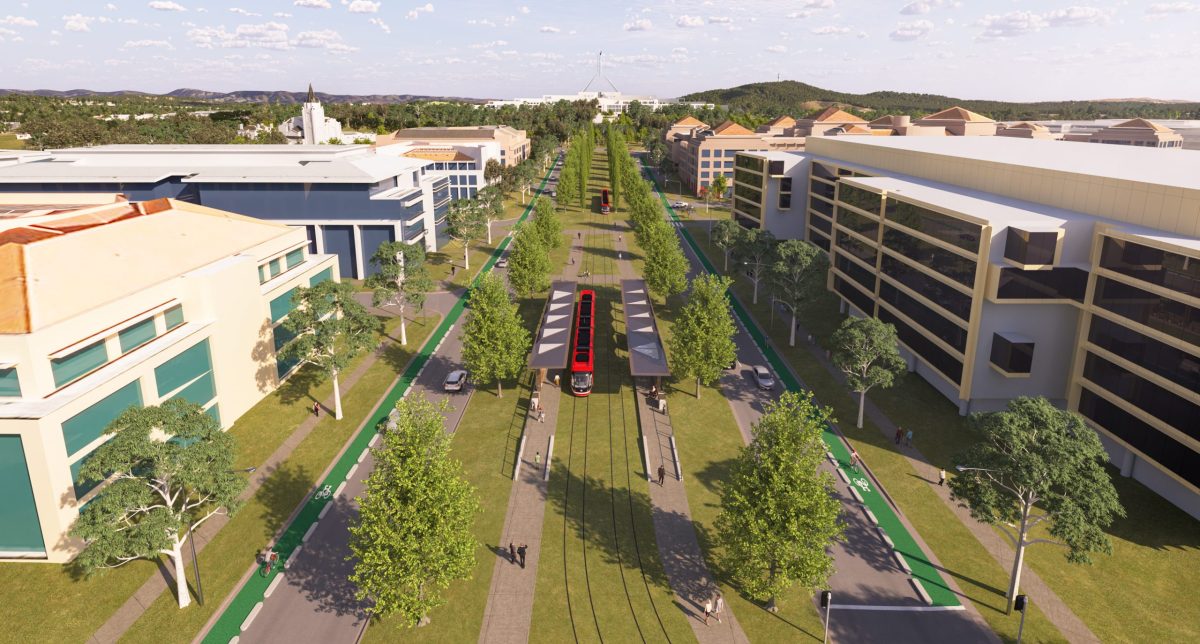
The Barton route will travel via Sydney Avenue.
The Preliminary Heritage Report says that both routes are likely to result in a significant impact on the Commonwealth Heritage values of the project area.
This would include the removal of established mature and culturally significant trees, individual trees, or avenues of trees planted by Charles Weston in the 1920s.
It also lists the impacts of roadworks, bridge construction, the creation of new rail corridors through green spaces, altering the form of the existing road network and historic road alignments, and the effects the changed function and character of areas may have on cultural, social and symbolic heritage values.
There may also be impacts on Aboriginal heritage areas including original Molonglo River and associated sites now submerged in Lake Burley Griffin; Capital Hill, which may be part of a landscape identified as a women’s area; and landscape connecting Mount Ainslie, Black Mountain, and Stirling Ridge/Parliament Hill.
There could also be scar trees and unrecorded burial sites.
Along the Barton route, more recent Aboriginal activity includes the Tent Embassy opposite Old Parliament House. Construction will have temporary impacts but when running, light rail may reduce access and pose potential safety risks during protests.
An Aboriginal heritage assessment will be included in the EIS.
Chair of the Public Transport Association of Canberra, Ryan Hemsley, said the referral was a positive, concrete step towards delivering light rail to Woden.
“The documents provided in the EPBC referral offer a closer look at many project details, and we encourage everyone to take a look at what’s proposed,” he said.
“While PTCBR would love to see this city-shaping transport project expedited on a faster timeline, this is welcome progress and we look forward to seeing the project proceed smoothly.”
Public consultation is now open on the EPBC referral.












